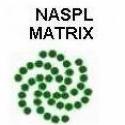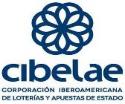Winning Ticket: National Lottery Entitled to Rely on Well-Drafted and Properly Incorporated T&Cs to Refuse £1m Customer Claim
![]() United Kingdom (May 5, 2023) — Facts: Camelot UK Lotteries Limited (Camelot) is the licensed operator of the National Lottery.
United Kingdom (May 5, 2023) — Facts: Camelot UK Lotteries Limited (Camelot) is the licensed operator of the National Lottery.
In August 2015, the claimant bought a £5 ticket for one of Camelot’s online instant win games (IWGs). To win that particular IWG, a player has to match one number in the “your numbers” section of the screen with the “winning numbers” section. As soon as a player presses “play” on the screen, the random number generator (RNG) within Camelot’s interactive platform selects a number that corresponds with a specific prize tier. That number determines the outcome of the player’s ticket (in this case, the RNG corresponded with a prize tier of £10).
Having selected her numbers, the claimant saw an animation on screen, circling and flashing in white the matching number 15, and confirming she had won £10. However, upon closer inspection of the screen, the claimant saw that the number 1 had also matched between “your numbers” and “winning numbers”, and the prize for that match was £1 million. There was no corresponding flashing message or animation in respect of either the 1 or £1 million. Therefore, the claimant took a screenshot and submitted this to Camelot, claiming a £1 million prize alongside the £10 she had won. The claimant clicked “finish” to complete the game and was told she had won £10 (which was immediately credited to her account).
Camelot refused to pay the £1 million, citing a coding error with their animation software, which had incorrectly listed “1” in both “your numbers” and “winning numbers”. The claimant issued proceedings and applied for summary judgment.
Claimant’s position
When the claimant opened an online National Lottery account (on 27th February 2009), she was required to tick a box confirming she had read and agreed to be bound by various of Camelot’s terms and conditions, including (in the respective order of priority):
- the games procedure for the specific games she wished to play;
- the rules for IWGs (the IWG rules); and
- Camelot’s interactive account terms and conditions.
All of these terms (along with other documents including Camelot’s privacy policy) were accessible via a series of hyperlinks and/or drop-down menus (collectively, the terms).
From time to time, Camelot updated the terms. Any material changes required the claimant (by clicking a button marked “accept”) to re-accept; at which point she would have been presented with a drop-down menu showing a summary of the changes along with a complete version of the updated set of terms.
The claimant advanced several submissions on the basis of non-incorporation and/or unenforceability of the terms. She argued that she had matched the number 1, and that was enough to secure the prize of £1 million, along with the £10 already paid.
Respondent’s position
Camelot, who had separately investigated the matter extensively on the instruction of the Commission, responded as follows:
- The outcome of a £10 win was determined the “metaphorical nanosecond” after the Claimant pressed “play”. Whatever order the various numbers on the screen the claimant subsequently clicked would make no difference whatsoever to the £10 outcome. The outcome was predetermined the moment she started playing.
- The RNG determines the outcome of play before the computer selects the animation files. Accordingly, the failure of the animation software to translate the pre-determined £10 win into all aspects of the visual display should not affect the outcome of the claimant’s play.
- In all instances, Camelot was entitled to rely on the terms to refuse payment of the £1 million to the claimant.
The three key issues that Mr Justice Jay analysed were as follows:
- What were the terms of the contract between the parties (the incorporation issue)?
- Were all, or any, of the incorporated Terms rendered unenforceable by reason of the Unfair Terms in Consumer Contracts Regulations 1999 (UTCCR) (noting that the circumstances of this case arose before the coming into effect of the Consumer Rights Act 2015) (the enforceability issue)?
- Do the incorporation issue and the enforceability issues above imply that the claimant won the £1 million she claimed (the construction issue)?
Incorporation
The judge considered there to be two main questions in respect of incorporation:
- Could the terms be incorporated in the way Camelot had purported to do so (ie, through the series of hyperlinks and drop-down menus)?
- Were there any onerous or unusual clauses requiring specific signposting?
Subject always to the second question, Mr Justice Jay was satisfied that the terms were properly incorporated by the requirement the claimant “click to accept” before being able to play the IWG. The fact that it had been six years since the claimant had ticked the relevant box and whether the claimant had actually read the terms or not was immaterial; the judge found it would, had the claimant wished to do so, have been the “easiest thing in the world’ to click the drop-down menu revealing the game procedure, which in turn contained hyperlinks to the other terms.
On the second question, the judge concluded that there was nothing either onerous or unusual about the various contractual provisions within the terms on which Camelot sought to rely. He also found the terms to be clearly drafted, set out in a logical order and with reasonably prominent headings.
Therefore, the terms were properly incorporated into Camelot’s contract with the claimant.
Enforcement
The judge found that the “network of contractual provisions” on which Camelot relied was clearly drafted and well-signposted through the various hyperlinks.
The right approach was not to read the terms as a whole when determining whether or not they were unfair. Rather, the approach was to review the pertinent clauses and rendering (if necessary) those falling foul of UTCCR void or unenforceable but allowing the remaining unobjectionable clauses to survive.
While the judge accepted that some of the clauses may have created an imbalance, there was not a significant imbalance. Camelot was entitled to explain to players the basic philosophy of the IWG (ie, IWG is a game of chance, and the outcome will be determined as soon as the player presses “start”). It is not unfairly one-sided for Camelot to have a validation process whereby it only pays out on those plays it has cross-checked against its list of predetermined “winning plays”. As these are randomly generated, a (clearly drafted) clause to that effect cannot reasonably be considered as creating any unfairness. Further, the game procedure clearly stated that only one prize would be issued per player and that the IWG was only completed once the player selected “finish”. In the claimant’s instance, once she pressed “finish”, she was presented with a screen showing a win of £10. There was therefore no conflict between the result finally displayed and the £10 paid to the claimant.
Accordingly, none of the clauses on which Camelot needed to rely to successfully dismiss the application for summary judgement was found to be unfair, and so were all deemed enforceable.
Construction
Finally, using ordinary contractual principles sense-checked against a “modicum of flexibility and common sense”, the judge ruled that there was no construction under which the claimant could win a second prize, and accordingly (under the game procedure), the outcome was a win of £10.
The judge considered the game procedure must be read in its entirety to determine whether the claimant’s claim for £1 million should be upheld. It was clearly stated in the game procedure that a win is shown by:
flashing white matching numbers and a message stating what the win amount is and that the player must then select ‘finish’ to complete the game. [The game procedures] also make it clear that a player can only win once per play.
This position was reinforced by the language of the IWG rules, where the RNG had logged a corresponding win of £10, being the result recorded on Camelot’s list of “winning plays”. Applying the facts, the IWG rules were also to be construed in line with the game procedures, and there was therefore no construction of the terms on which the claimant could succeed.
Outcome
On the basis of the above, the claimant’s application for summary judgment was dismissed.
This case provides a helpful reminder to operators, particularly in the wake of Green v BetFred of the need for clearly drafted, properly incorporated and adequately sign-posted terms and conditions with their customers.
However, in this case Mr Justice Jay refused to engage in a hypothetical consideration as to whether Camelot would have been able to rely on its terms in the event the software error had presented the claimant with a final screen showing (erroneously) that she had won £1 million.
The relevant clause in the terms (which, given there was no inconsistency between the presented result and the RNG allocation was not considered in the current case) stated:
Camelot may declare a Play invalid (and will not be obliged to pay any Prize) if…the outcome of a Play as displayed on the Game Play Window is inconsistent with the result of that Play as predetermined by Camelot’s Computer System.
It would have been helpful if the facts of this case invoked that clause, or if Mr Justice Jay had embarked on hypothetical consideration as to its enforceability. In the absence of either, the principles of Green v BetFred (that an operator can in theory exclude liability for an erroneous win provided their terms are clearly sign-posted and not unfair) remain untested. Operators must therefore (if they have not already) review and update their consumer terms to ensure these are sufficiently transparent, fair and enforceable (in line with the learnings from Green). There should also be ongoing conversations between operators and suppliers about their respective liability in the event of a software error leading to an erroneous result for a player, where the operator is unable to exclude its liability to that player under its consumer terms.
Author: Claire Livingstone
SOURCE: Wiggin LLP via Lexology
For further information on this topic please contact Claire Livingstone at Wiggin by telephone (+44 20 7612 9612) or email (claire.livingstone@wiggin.co.uk). The Wiggin website can be accessed at www.wiggin.co.uk.
Tags: Camelot UK Lotteries Limited, Lexology, Wiggin LLP, coding error




























